Virginia Crow's Blog: Crowvus Book Blog, page 16
December 5, 2023
5th December: "Happy Christmas, that can transport the traveller back to his own fireplace and quiet home" (Charles Dickens)

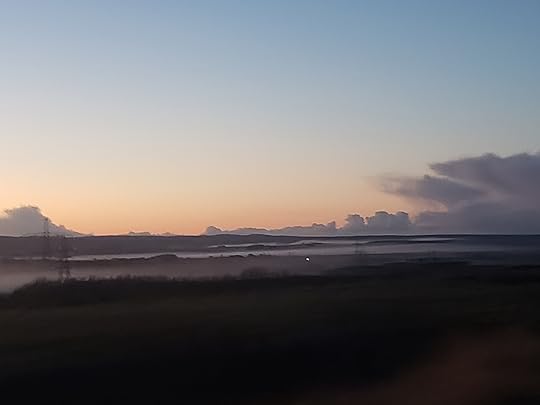
We reached Thurso and admired the Christmas tree, complete with Santa and gnomes! Then, it was further down the road to get home before it was completely dark...
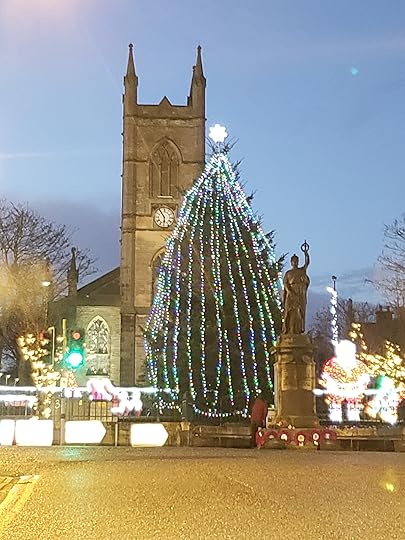
When we got home, we made an exciting discovery! Mum had been feeding the Christmas cake alcohol to make it super tipsy! And here's jars of mince meat to make one of my favourite Christmas treats: mince pies!
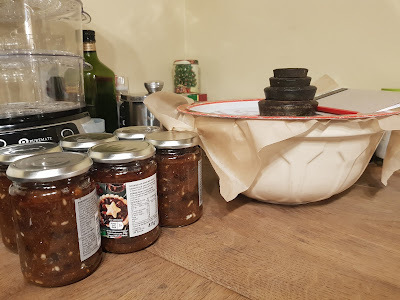
"Chestnuts... roasting on an open fire..." Only, in our case, it was more like 'burning on an open fire' so we'll be roasting them in the oven instead.
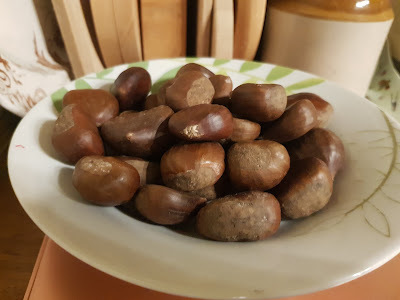
Merry 5th December!
December 4, 2023
4th December: Slip Slidin'
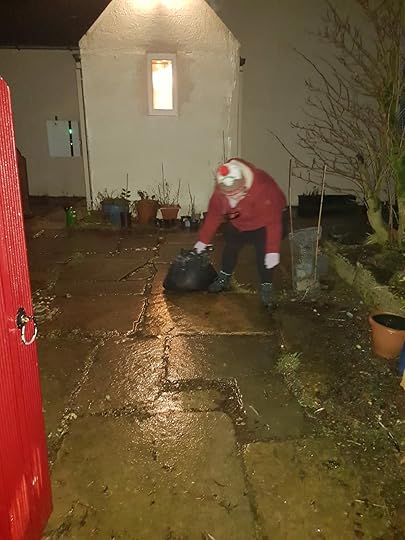 Picture 1: It was quite a fun start to the day with the flagstones acting as an ice rink! All my school bags were making me top-heavy, so I had to put them in a bin bag and slide them along the floor!
Picture 1: It was quite a fun start to the day with the flagstones acting as an ice rink! All my school bags were making me top-heavy, so I had to put them in a bin bag and slide them along the floor!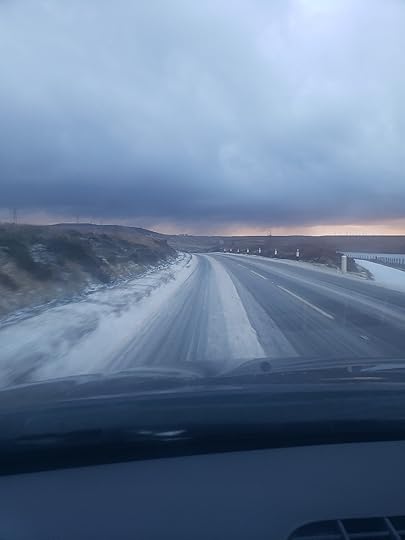 Picture 2: Heading out this morning, the roads were treacherous but they were also very beautiful.
Picture 2: Heading out this morning, the roads were treacherous but they were also very beautiful.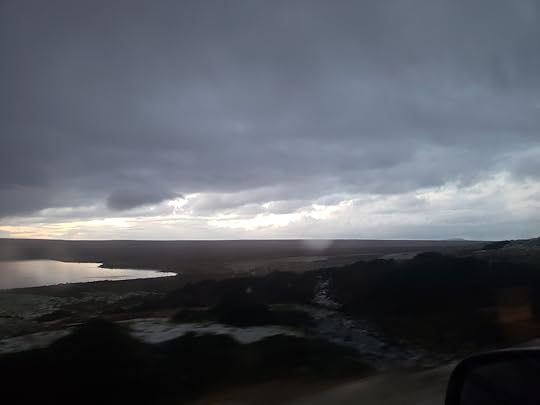 Picture 3: A very stormy sky on the way home from school.
Picture 3: A very stormy sky on the way home from school. Picture 4: Apparently, Orlando was quite concerned about our driving today, but I think he was just put out that it was too icy to have a walk!
Picture 4: Apparently, Orlando was quite concerned about our driving today, but I think he was just put out that it was too icy to have a walk!
December 3, 2023
3rd December: Hoar Frost and Christmas Preparations
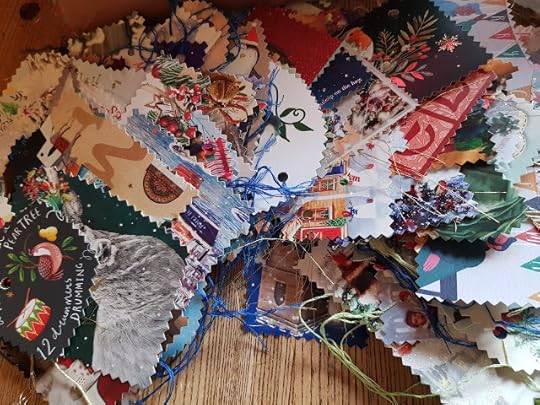 Photo 1: We haven't made gift tags for about five years. It was very poignant to go through the Christmas Cards, thinking of each person whose name appeared there, both those still with us and those who have now gone.
Photo 1: We haven't made gift tags for about five years. It was very poignant to go through the Christmas Cards, thinking of each person whose name appeared there, both those still with us and those who have now gone.
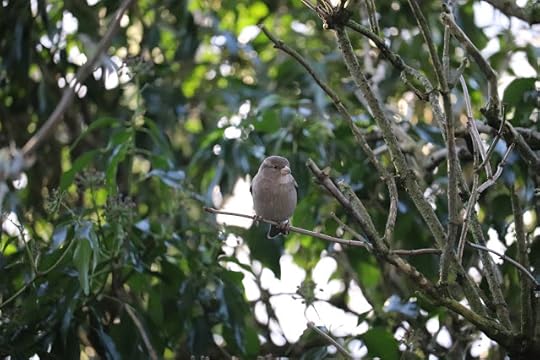
Photo 2: The poor birds are really struggling at the moment. We're feeding them, but finding water can be tricky. Whenever we put water out, it is frozen within the hour!

Photo 3: I absolutely love hoar frost! The Legend of the Spider's Web is never far from my mind as I wander out in this weather. It is as beautiful as snow - though perhaps not quite as much fun!!
December 2, 2023
2nd December: A prelude to a white Christmas?
This morning, I got up early with the expectation to go for a wander down the road, which we did, just as it was getting light. Everything was white, not with snow, but a startlingly thick layer of frost.
 This photo was taken as we turned to walk back home.
This photo was taken as we turned to walk back home.----
The next photo is the dogs' new Christmas wear. Orlando has just been to the groomies, just in time for the coldest snap of the season. Yes, he looks a little intense, but the jumper really helped, complete with leg warmers too!
 Here are Orlando and Jess waiting for their walk in frosty Stempster!
Here are Orlando and Jess waiting for their walk in frosty Stempster!December 1, 2023
1st December: A Little Light Goes a Long Way
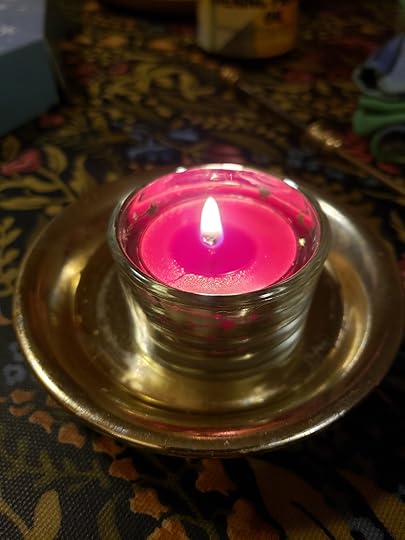 Photo 1: For a few years, one of Ginny's pupils always used to get her a Yankee Candle advent calendar. This year, Mum found one for us in Glasgow... so this was our first advent commemoration and it seems fitting that it's a little light.
Photo 1: For a few years, one of Ginny's pupils always used to get her a Yankee Candle advent calendar. This year, Mum found one for us in Glasgow... so this was our first advent commemoration and it seems fitting that it's a little light.It's great to be back counting down to Christmas with you!
November 29, 2023
Masterworks: Legacy - Samantha Wilcoxson - Interview
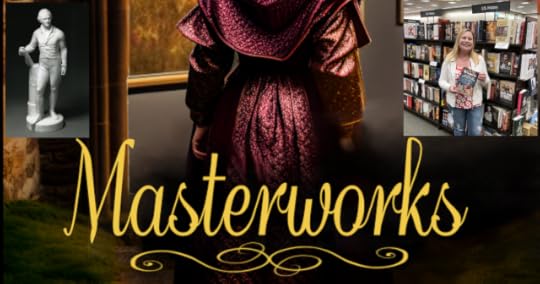
Today is the last of a series on nine interviews I'm sharing on the Crowvus Book Blog. These are from the authors of the short stories included in the Masterworks anthology by the Historical Writers Forum. We're running through chronologically, some are video interviews, others are written.
I am delighted to welcome the fantastic Samantha Wilcoxson, who is sharing the artist inspiration for her short story Legacy, as well as the appeal of James A. Hamilton, and the delights of researching.
First of all, tell us a little bit about yourself, what you write (besides Masterworks!), and what inspired you to begin writing.
I was inspired to write by my love of reading. After watching me read, write reviews, and keep journals for twenty years, my husband asked me why I didn’t try writing, so I did! Without really planning on it, I ended up writing historical biographical fiction. I’m drawn to a tragic tale but also to lesser known historical figures with emotive stories to tell. Therefore, I have written about Elizabeth of York and Mary I, rather than any of Henry VIII’s wives. More recently, I’ve written about the radium girls of Ottawa, Illinois, and Nathan Hale during the American Revolution.
-~-
Introduce us to your chosen artwork
The artwork I chose for my Masterworks story is a marble statue of Alexander Hamilton that was sculpted by Robert Ball Hughes in 1835. This statue captures Alexander as most of us envision him, in the prime of his life, handsome, and ready to take on the world – or at least Thomas Jefferson. This statue was destroyed in New York’s Great Fire of 1835 less than a year after its installation and after James, Alexander’s son, failed in his efforts to save it.
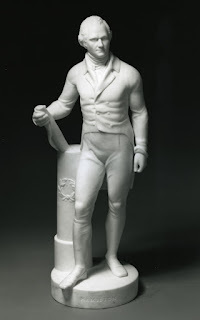
-~-
Legacy puts the reader directly into the mind of James Alexander Hamilton. How difficult was it to research to such an extent that you were able to tell the story of a real person in this way? Did you discover any research gems?
James A Hamilton’s story is filled with research gems! One of my favorites is a letter he wrote to General Winfield Scott at the beginning of the Civil War offering his military service. ‘Permit me to ask if a hale man, of seventy-three years of age, can be useful in any way, that you will command my services? To cut off the remnant of an inglorious life by a glorious death in the service of our country to which my ancestors of two generations devoted their best services, ought not be considered as an event to be avoided.’ James was born in 1788, and in the late 1860s he wrote his Reminiscences. It’s not exactly a memoir, but a collection of letters, essays, and thoughts regarding the historic era he had lived through. Reading this and many of his personal letters helped me imagine what must have been going through his mind as some of these events happened.
-~-
This story explores how one man felt in relation to his father. What would you say were the greatest similarities and differences were between the two generations of Hamiltons?
James clearly shared his father’s intellect and passion for law and finance. His Reminiscences include pages of economic and banking advice sent to presidents and other government officials. He was a quieter man than his father, only serving as temporary Secretary of State and never grasping at a permanent cabinet position. James also was much more diplomatic. Alexander Hamilton famously said too much with excessive candor. James made friends among people with diverse political beliefs and explored Europe making favorable connections everywhere he went. Though not an official ambassador, he frequently spoke on behalf of the United States and was known for his integrity.
-~-
As someone who writes about historical figures, how important do you think it is to have something in common with the people you write about?
I don’t always have a lot in common with the people I write about, but I do need to be compelled by their story and feel like it’s something readers should know more about. I also tend to select historical figures who share my Christian faith.
-~-
Your story is written as a memoir. What are the biggest pros and cons for writing this genre?
While I chose this writing style specifically to deeply connect with one historical figure, it does limit me to a single point of view.
-~-
Have you got a favourite line from Legacy of which you felt particularly proud?
Most of my favorite lines, such as, ‘Can freedom loving Americans stand before the world as a great republic that holds people in fetters while tyrants free their slaves?’ are taken from James’s own writing, so I can’t really take credit for them. I did like to ponder what it must have been like to grow up in the shadow of such a great, though controversial, man by having James ponder, ‘The lesson to admit when I am wrong and fight for what is right is one that I learned on my own. Was it because my father was never wrong, or did he simply not live long enough to see himself proven so?’
-~-
What do you hope readers will take away from your story?
I hope they will form an attachment for dear James, of course, but I also hope the focus on the era between the American Revolution and Civil War causes readers to contemplate how much more complicated of a task it was to form a new nation and compromise on laws and issues that seem non-negotiable to us. As James thinks to himself in my story, ‘It had seemed reasonable to them to leave some problems for their sons to solve. And so here I am.’ Instead of accusing historical figures of failing, perhaps we should be more willing to do our own part in the present.
-~-
If time travel were possible (perhaps it’s only a matter of time!) would you choose to go back to 1862 or another year? Why?
As much as I enjoy history, time travel is entirely unfathomable to me! Just considering it brings to mind the many ways I would have met my demise before now if I were living in another era. But if I could spend an evening listening to James talk about his long and interesting life? Yes, absolutely I would.
-~-
What’s next for your writing? Any projects in the pipeline?
I am currently writing a biography of James A Hamilton for Pen & Sword, which is scheduled for publication in January 2025. Through his story, I am able to explore the early history of our nation and loads of interesting people and events. Besides relationships with men like Andrew Jackson, John Quincy Adams, and Martin Van Buren, James participated in the first America’s Cup, New York’s Crystal Palace, and has left us priceless observations on early republic politics.
You can find Legacy in the Masterworks anthology, which is available on #KindleUnlimited HERE!
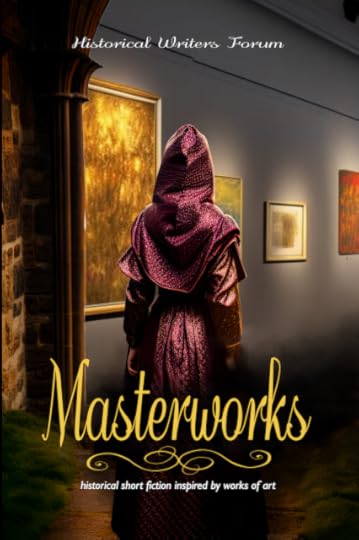
Now, let's meet the author!
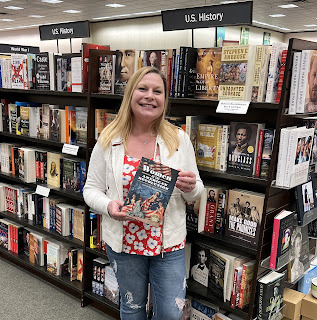 Samantha Wilcoxson is the author of historical fiction and nonfiction, an administrator for the Historical Writers Forum, and history blogger. https://samanthawilcoxson.blogspot.com/
Samantha Wilcoxson is the author of historical fiction and nonfiction, an administrator for the Historical Writers Forum, and history blogger. https://samanthawilcoxson.blogspot.com/She lives in Michigan with her husband of twenty-eight years and is the mom of three amazing young adults. Samantha loves exploring the emotional side of history and visiting historic places to feel closer to the past.
November 28, 2023
Masterworks: The Watcher on the Wall - Gareth Williams - Interview
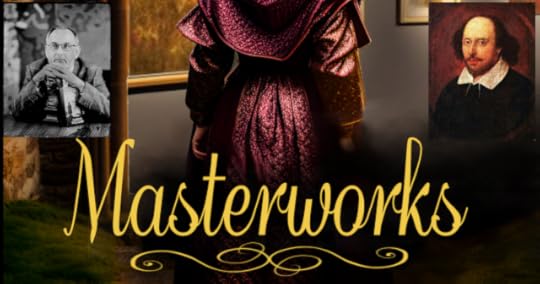
Today is the penultimate in a series on nine interviews I'm sharing on the Crowvus Book Blog. These are from the authors of the short stories included in the Masterworks anthology by the Historical Writers Forum. We're running through chronologically, some are video interviews, others are written.
Here is the fantastic Gareth Williams, sharing a little insight into his thought-provoking short story The Watcher on the Wall, writing across centuries, and the unifying power of art.
First of all, tell us a little bit about yourself, what you write (besides Masterworks!), and what inspired you to begin writing.
I broke my back in three places in a climbing accident and this made me evaluate my priorities. Having retired from a career in education, I now write historical fiction while living on the Isle of Skye. I am inspired by characters famous or obscure, and times when major changes are afoot. My (so far) trilogy The Richard Davey Chronicles is set from 1815 and comprises Needing Napoleon, Serving Shaka and Rescuing Richard. I like immersing readers in the past. It is a form of time travel (of which there is a bit in Needing Napoleon) … more about that later!
-~-
Introduce us to your chosen artwork
The Chandos portrait of William Shakespeare is the only portrait we have that was probably painted from life. It was painted by John Taylor but bears the name of a famous owner, the 1st Duke of Chandos, James Brydges. It was the very first painting acquired by the nascent National Portrait Gallery in London when it was established in 1856.
In the portrait, Shakespeare wears an enigmatic expression, compelling me to wonder what he is thinking, what brilliance is sparking in that creative mind?
-~-
In the story, you differentiate between William Shakespeare as the sitter and William Shakespeare as the work of art. What was your inspiration for this choice?
My short story is about the portrait rather than the man who sat for the artist. I know that sounds mad! But works of art are interpreted by everyone who regards them. My premise for The Watcher on the Wall is that this might be a reciprocal process. That the portrait evolves through its interactions with those who study it, becoming someone quite different.
I wanted a mechanism to imagine how Shakespeare might react and evolve were he to ‘live’ through the centuries that separate us from him. But I also wanted to capture a hint of what his works have meant to a variety of people long after his demise. His works guarantee him a type of immortality, as does a portrait.
-~-
The Watcher on the Wall follows people through their lives. What was the hardest thing about writing across generations?
Writing a short story that spans the two centuries since the National Portrait Gallery acquired the Chandos portrait of Shakespeare gave me a framework to interrogate ideas of life and death, literature and how it is coopted by its consumers (us).
The challenge was to convey a sense of period and reveal the essence of a character without overloading the story with background and explanations. By framing everything within the gallery, I avoided the need for too much period detail, using the visitors to the gallery to communicate the passage of time instead. I think the hardest thing in spanning generations is getting inside the head of people whose contexts are very different, but in a sense, this was the whole point of my short story.
-~-
Your story includes a number of real people and events. Who was your favourite one to research? Why?
I enjoyed researching Thomas Carlyle because he suited my purposes as both a founder of the National Portrait Gallery and an influential historian who was referred to by Emerson as a ‘secular prophet’. Born into very modest circumstances, he rose through his intelligence to become one of the leading writers of the Victorian era. For all that, many of his attitudes are unpalatable to a modern audience, and I wanted to capture a sense that he was falling out of step with the direction of society’s travel. Whether I achieved this is for the reader to judge.
I also enjoyed including a vignette of the late queen because her portrait by Annigoni was the reason I first visited the National Portrait Gallery, and her death marked the end of a defining constant in my life.
-~-
Your story is written from the point of view of the painting. What did you find were the biggest pros and cons for this?
I had thought long and hard about this approach before committing to it. In a sense, I embraced the limitations it created. Constrained inside a gallery, only able to ‘see’ those who stand and stare or pass by, I was able to edit the crowds of visitors. Only those who spend time with the painting are worthy of notice in a short story about the interaction between portrait and viewer.
There were lots of fascinating events between 1856 and the present that I would have enjoyed writing about but most were inaccessible unless they could somehow ‘happen’ in sight of Shakespeare’s portrait. However, world wars and the suffrage movement are examples of major turning points in history that did touch the National Portrait Gallery, so I was not short of potential material!
-~-
Have you got a favourite line from The Watcher on the Wall of which you felt particularly proud?
You raise your hand. Half a wave. What will you be? I cannot sort it from the turmoil of your thoughts. You do not know yet. I envy you as you walk away.-~-
What do you hope readers will take away from your story?
I hope readers will value the universal humanity that unites the characters who populate my story. That they will think about the power of art and literature to inspire and console, excite, and entertain. That they will embrace the notion that we are (almost) all a product of our time and forgive our forebears some of their perceived flaws, just as we might wish to be judged with understanding and compassion.
-~-
If time travel were possible (perhaps it’s only a matter of time!) would you choose to go back to any of the years in this story, or another year? Why?
So, we come back to time travel! I am a bit obsessed about Napoleon and would love the opportunity to talk with him on the eve of Waterloo, just as my main character Richard Davey manages in Needing Napoleon. That would make my answer 1815 but then I think about the state of dentistry at that time and change my mind.
As a big Beatles fan, 1967 is pretty tempting. I was born in 1964 but at three, the impact of Sgt. Pepper’s Lonely Hearts Club Band escaped me! The sense of change and optimism of that decade when the young were finally having their say is hard to resist (I would make sure to pack my rose-tinted spectacles!).
-~-
What’s next for your writing? Any projects in the pipeline?
I am on the final edit of a fictional biography entitled Captain Liar & the Forgotten Flag – the Life and Death of William Augustus Bowles.
William was born as the American colonies were agitating for independence. He was brought up in Maryland as a loyal monarchist and ran away to join the King’s army at fifteen. His life is a series of improbable (but true) adventures that see him elected Director General of the Creek nation, declare war on the Spanish empire and die on hunger strike in the cell of Havana’s Morro fortress at the age of forty-two.
His life is a struggle to find a place where he belongs as the certainties of his upbringing unravel around him.
You can find The Watcher on the Wall in the Masterworks anthology, which is available on #KindleUnlimited HERE!

Now, let's meet the author!
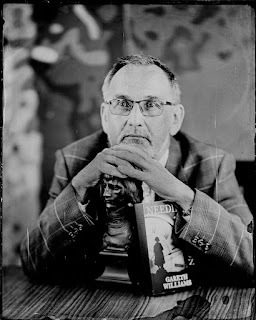 I studied History and Law at Queens’ College, Cambridge before briefly working in banking and recruitment. I eventually settled on a very happy career in teaching.
I studied History and Law at Queens’ College, Cambridge before briefly working in banking and recruitment. I eventually settled on a very happy career in teaching.I taught history at Elizabeth College, Guernsey and was then head of department at The School of St Helen & St Katharine, Abingdon. Finally, I was Director of Sixth Form at St Mary’s, Ascot.
I retired to the Isle of Skye where I am climbing all the Scottish mountains over 3000 feet. In winter, I try to ski as much as possible, both backcountry and downhill.
My first novel, Needing Napoleon, was published in November 2021. My main character is instrumental in helping Napoleon rebound after his defeat at Waterloo, ultimately helping him escape from St Helena for the shores of Africa. The sequel, Serving Shaka, came out in March 2022. In this book, Napoleon encounters the growing might of the Zulu nation and has to accommodate himself to a very different reality. I have completed the third instalment of The Richard Davey Chronicles, which is titled Rescuing Richard. This should be released in spring 2023.
I am working on a standalone historical adventure set during and immediately after the American War of Independence. I am also pondering the ending of a ghost story that weaves together three timelines that converge on Hadrian’s Wall.
I have written short stories on a variety of subjects. Most recently, I wrote a short story featuring a nineteenth century photographer. This was part of a collaborative project with a friend who has built a wet-plate collodion camera.
I give talks in my local area and beyond as well as participating in an online history writers’ group. I am chairperson of The Skye Reading Room, a local organisation for both readers and writers. I am a member of the Scottish Writers’ Association and the Historical Novel Society. I have applied to the Scottish Book Trust to join their Live Literature scheme and will be attending the Scottish Writers’ Association Conference 2023 near Glasgow in March.
November 27, 2023
Masterworks: Portrait of a Lady - Joanne Major - Interview
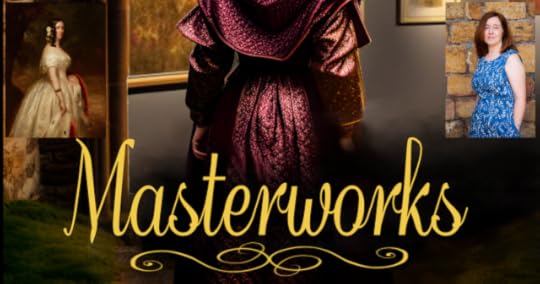
Today is the seventh of a series on nine interviews I'm sharing on the Crowvus Book Blog. These are from the authors of the short stories included in the Masterworks anthology by the Historical Writers Forum. We're running through chronologically, some are video interviews, others are written.
I'm delighted to welcome the brilliant Joanne Major to share a few answers about the inspiration for her intriguing story, Portrait of a Lady, keeping fiction believeable, and her research process...
First of all, tell us a little bit about yourself, what you write (besides Masterworks!), and what inspired you to begin writing.
I live in Lincolnshire with my family and dogs. I’m not far away from Lincoln itself which is a wonderful city for anyone interested in history.
Although I’ve always written, for the longest time I lacked the confidence to attempt publication. That changed after a chance online encounter via a genealogy forum with Sarah Murden who would go on to be my co-author for several years. We stumbled across a fascinating but little-known historical story. The research led down rabbit holes and soon there was enough material for three nonfiction books. One day, I was contacted via Twitter by someone commissioning for Pen & Sword Books. Did I, she wondered, have anything I’d like to submit?
Six years later, and after co-authoring four biographies and one collection of true short stories, I began to research and write what would become my first solo work, Kitty Fisher: The First Female Celebrity, published in 2022. Alongside that, I enrolled at the University of Lincoln to study for a degree in Creative Writing. I graduated with a BA (Hons) and went on to study for an MA.
During my time at university, I’ve concentrated on fiction and rediscovered my love of creating characters, and their worlds, and of telling stories.
-~-
Introduce us to your chosen artwork
It’s a three-quarter length portrait by Franz Xaver Winterhalter (1805-1873), titled Portrait of a Lady and held in the collection of the Minneapolis Institute of Arts. Winterhalter was a German artist who became known as a painter to the royal courts of Europe. His subjects almost exclusively came from society’s top tier. This portrait, however, is of an unknown lady connected to Queen Victoria’s court. She is holding a mantel edged with ermine which, in art, often denotes royalty or at least a peer of the realm. Dating to around c.1840/50, it seems strange that someone significant enough in her day to be painted by Winterhalter would, within a century, be nameless.
A writer in the 1940s said that ‘there is no record of the identity of the subject, but her bearing and costume indicate that she was one of the bevy of young women who fluttered about the Queen at Windsor… The spectator’s interest, like the artist’s, is centred on the subject, who is painted with all the charm – and the rather unexpected lack of flattery – on which Winterhalter’s claim to fame rests. About her, and the world she represents, there is something infinitely, if fleetingly, appealing.’
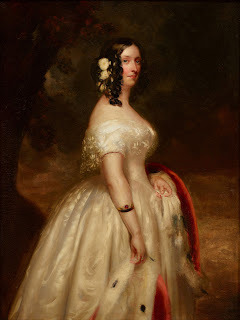
-~-
The story focuses on the upper echelons of society. How much research did you have to do into the way these people lived and worked?
The main part of the story is set in 1844, and the conclusion is in 1880. It also harks back to the end of the previous century, to establish Jeanne’s back story, and so covers almost a hundred years. My research to date has focused mostly on the eighteenth and nineteenth centuries and both well-to-do families and those from poorer backgrounds. Therefore, I began with a reasonable knowledge of the society portrayed in my story. However, there was research still to be done.
I read up on Franz Xaver Winterhalter and spent time looking at his various paintings. The etiquette at Queen Victoria’s court and in grand houses was also something I researched but, as I was writing fiction, I did allow myself a few liberties. As well as reference books, I rewatched period films and TV dramas such as Victoria which helped me to visualise the clothes and settings for my story. (In short, research was a lot of fun!)
The history of the French Revolution, the July Revolution, and the events surrounding the exile and restoration of the French monarchy were events I needed to revisit ahead of writing. I drew up a detailed timeline so I could be sure of facts and dates, and that my story would fit into them.
-~-
Was there a particular research gem which you discovered while you were writing Portrait of a Lady?
As someone who has thoroughly enjoyed the TV series Victoria, one of the discoveries I made during my research was that Nancy Skerrett, Queen Victoria’s dresser, was based on a real person. In the TV series, Skerrett was a heavily fictionalised version of Marianne Skerrett who worked for the queen between 1837 and 1862. Once I’d realised that, she had to make a brief appearance in my story.
-~-
This is a story of intrigue. What was the hardest thing about writing a story in this genre?
My published writing to date has been in nonfiction. I’m still learning when it comes to fiction and am finding my voice and style. The hardest thing was to keep my protagonist, Jeanne, believable throughout while dropping enough hints that there was more to her story than she was letting on. I also had to detail the exile and subsequent restoration of the French monarchy (which forms the backdrop) in a natural way because I didn’t want it to come across as a history lesson.
-~-
Jeanne is a very complex character! What was the best or most fun aspect of her to write about?
I came to love Jeanne, and I hope that readers will too. She’s a flawed, manipulative person but also a woman who’s not afraid to take a chance. I enjoyed writing Jeanne’s dialogue, especially when she bumped into someone from her past. The ending was also a lot of fun to write, hinting at other adventures she’d had during her life.
-~-
Have you got a favourite line from Portrait of a Lady of which you felt particularly proud?
Lord Henry Webster ended up having quite a dry sense of humour and there are several of his lines of dialogue that I love, even though he’s often quite cutting.
My favourite line, though, is one spoken by Queen Victoria when she’s musing on Jeanne’s origins.
‘However, as she is a woman alone in this city then we should be circumspect, lest we place her in danger.’I like the implied sense of sisterhood and the fact that Victoria – or, at least, my version of her – is prepared to keep secrets if it helps another woman.
-~-
What do you hope readers will take away from your story?
First and foremost, I hope that they enjoy reading it and that it provides a brief escape from daily life. I’d also love to think that it leaves them pondering how women have navigated their lives throughout history and influenced their society. In my nonfiction writing, I concentrate on the little-known stories about women. Some of my discoveries have truly proved the adage that truth is often stranger than fiction, so Jeanne’s life seems entirely possible.
-~-
If time travel were possible (perhaps it’s only a matter of time!) would you choose to go back to 1844, or another year? Why?
If I had the chance, I’d go back to 1859. My first nonfiction book, An Infamous Mistress, was about Grace Dalrymple Elliott (1754-1823) who is remembered for many things, not least being a courtesan. She was also in France during the revolutionary years and left behind a journal which is one of the few first-hand accounts written from a female perspective. It was published posthumously in 1859. I am convinced that it was heavily edited by Grace’s granddaughter who removed some of the more salacious details. Also, I believe that either she or the publisher, added in a more dramatic ending. I’d like to get a look at that journal in its original state. I’m not sure what I’d then do to preserve Grace’s journal intact if I discovered I was right. A time-travelling theft might have to occur…
-~-
What’s next for your writing? Any projects in the pipeline?
I’ve got one more nonfiction book under contract, about a woman born in Lincolnshire. As well as that, for my Creative Writing MA I began a novel that was meant to be a psychological thriller, but which ended up crossing over into the women’s literature genre. Having got the first 25,000 words of that written, I’m aiming to complete it and see if I can get it published. I’ve also got three essays included in an upcoming anthology on Georgian-era elopement and abduction, titled, On the Wings of Love.
Aside from that, however, I’d love to work on more historical fiction. Jeanne may be someone I revisit as her adventures do not end with this story and I’m curious to know what else she got up to.
You can find Portrait of a Lady in the Masterworks anthology, which is available on #KindleUnlimited HERE!

Now, let's meet the author!
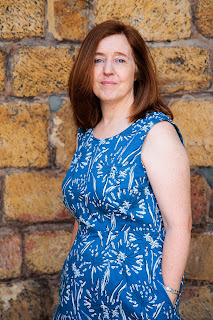 Joanne Major is the author, and co-author, of several works of historical nonfiction published by Pen & Sword History, set mainly in the Georgian era. Her latest book is the biography of an eighteenth-century courtesan whose name is remembered in a nursery rhyme, Kitty Fisher: The First Female Celebrity. Joanne holds a BA (First Class) in Creative Writing from the University of Lincoln and is studying for an MA in the same, focusing on crime/thriller writing. She lives in Lincolnshire with her family and dogs.
Joanne Major is the author, and co-author, of several works of historical nonfiction published by Pen & Sword History, set mainly in the Georgian era. Her latest book is the biography of an eighteenth-century courtesan whose name is remembered in a nursery rhyme, Kitty Fisher: The First Female Celebrity. Joanne holds a BA (First Class) in Creative Writing from the University of Lincoln and is studying for an MA in the same, focusing on crime/thriller writing. She lives in Lincolnshire with her family and dogs.
November 26, 2023
Masterworks: A Good and Proper Lunacy - Tempest Wright - Interview
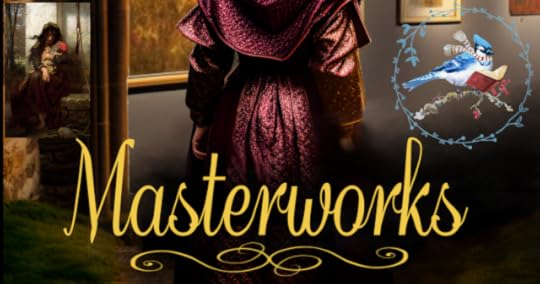
Today is the sixth of a series on nine interviews I'm sharing on the Crowvus Book Blog. These are from the authors of the short stories included in the Masterworks anthology by the Historical Writers Forum. We're running through chronologically, some are video interviews, others are written.
In this final video interview, I'm chatting with the brilliant Tempest Wright, who talks about the people who inspired her to write, the inspiration behind her fabulous short story A Good and Proper Lunacy, and the difficulties faced by having a young protagonist.
Or you can watch the interview in YouTube here!You can find A Good and Proper Lunacy in the Masterworks anthology, which is available on #KindleUnlimited HERE!

Now, let's meet the author!
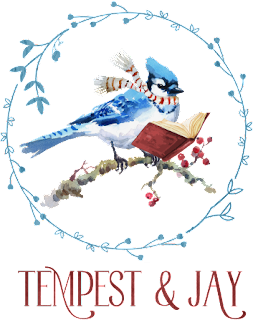 Tempest Wright is an author of historical fiction and fantasy, though she's been known to dabble in sci-fi and poetry. Living amongst the beautiful scenery of Vancouver Island, Canada, she finds inspiration in nature, music, and the people who come her way. This includes the love of her supportive husband, and the cuddles of two cats who have a playful fascination with her keyboard.
Tempest Wright is an author of historical fiction and fantasy, though she's been known to dabble in sci-fi and poetry. Living amongst the beautiful scenery of Vancouver Island, Canada, she finds inspiration in nature, music, and the people who come her way. This includes the love of her supportive husband, and the cuddles of two cats who have a playful fascination with her keyboard.Tempest enjoys a strong, character-driven story, which should always be had with an equally good cup of tea. She aspires to create characters and plots that inspire her readers and immerse them into both her historical and fantastical worlds.
History often leaves gaps, and places where Tempest can weave a story, and it’s these gaps she loved embellishing in A Good and Proper Lunacy.
November 25, 2023
Masterworks: The Ambassadress - Ronan Beckman - Interview
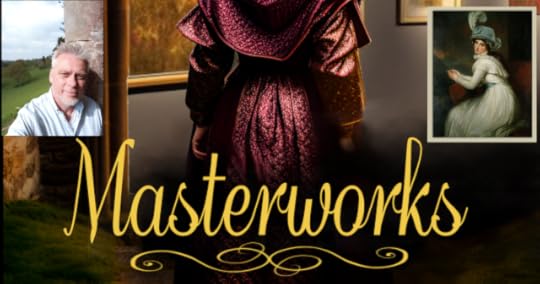
Today is the fifth of a series on nine interviews I'm sharing on the Crowvus Book Blog. These are from the authors of the short stories included in the Masterworks anthology by the Historical Writers Forum. We're running through chronologically, some are video interviews, others are written.
Join Ronan Beckman as he talks about his inspiration and the real people involved in his brilliant story, The Ambassadress, on the video below...
Or you can watch the interview in YouTube here!You can find The Ambassadress in the Masterworks anthology, which is available on #KindleUnlimited HERE!

Now, let's meet the author!
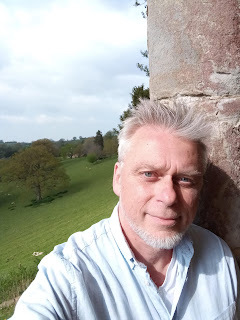 Ronan Beckman is an American educator who has lived in the UK for over 30 years. He has a wife and daughter at home, who he is immensely dependent upon for feedback and editing of his writing. His interest in history and genealogy helped to spark an interest in further developing the stories of some of the family he researched - resulting in his debut novel An Actress of Repute. Subsequently, he has become a bit obsessed with all things Georgian and Regency related. In addition to fiction based on historical biography, Ronan is working on editing the works of a coal miner who became a Member of Parliament, and gathering information for a planned biography of a French cartoonist who was the roommate and collaborator of a young Mark Twain.
Ronan Beckman is an American educator who has lived in the UK for over 30 years. He has a wife and daughter at home, who he is immensely dependent upon for feedback and editing of his writing. His interest in history and genealogy helped to spark an interest in further developing the stories of some of the family he researched - resulting in his debut novel An Actress of Repute. Subsequently, he has become a bit obsessed with all things Georgian and Regency related. In addition to fiction based on historical biography, Ronan is working on editing the works of a coal miner who became a Member of Parliament, and gathering information for a planned biography of a French cartoonist who was the roommate and collaborator of a young Mark Twain.
Crowvus Book Blog
- Virginia Crow's profile
- 128 followers



